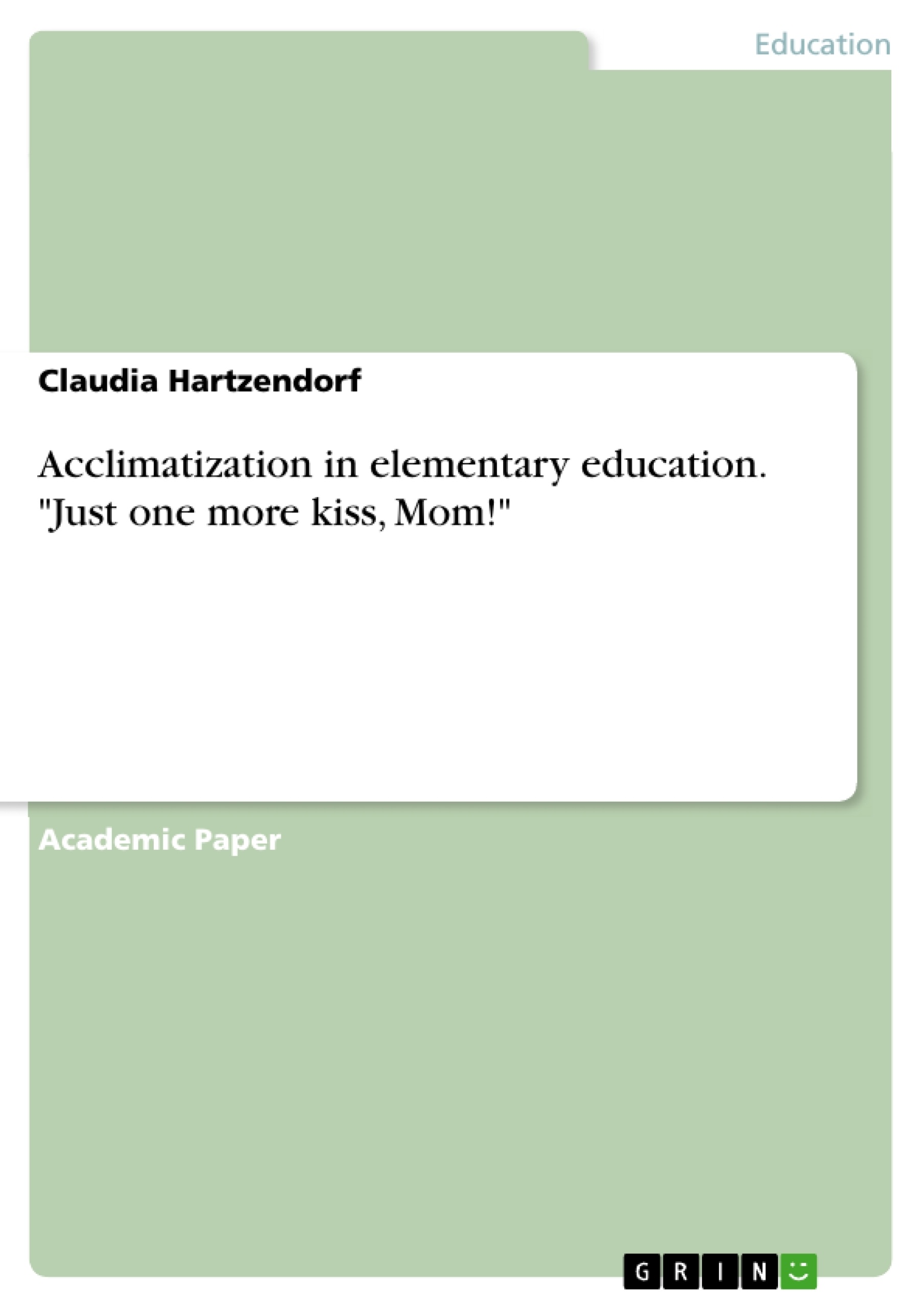When the time comes for a child to be looked after by a stranger, parents have many questions. Will the educator like my child? Will the pedagogical staff understand his or her signals? Can I talk about my fears, my concerns, maybe even my worries? Will the educator compete with me?
To answer all these questions, it is essential to carry out a gentle and individual acclimatization. During my first internship, I was asked by my mentor to carry out an acclimatization as a caregiver. This acclimatization took five weeks. Three years before, I adjusted my son in the same institution, here it took about 10 days. From this practical experience, I know how different the length of an acclimatization can be and what a challenge it is for everyone involved. In order to make the start in the facility easier for the child, close cooperation between the team, the provider and the parents is a basic in acclimatization. But questions also remained unanswered. Is there one right way to settle a child in? How should one prepare for the settling-in period, as an educator and as a team? What possibilities are there to make settling in easier for everyone involved? I would like to get to the bottom of these questions in my thesis.
Inhaltsverzeichnis (Table of Contents)
- Introduction
- Attachment
- Definition of attachment
- attachment development
- attachment theory
- attachment types
- Acclimatization in the elementary level
- Acclimatization as an educational mission
- conditions
- general conditions
- Cooperation with parents
- Discussion in the team, with the management and the carrier
- Self-reflection and reflection
- Organizational proposals for implementation
- Acclimatization
- Importance of acclimatization in the elementary sector
- Acclimatization models
- The Munich acclimatization model
- The Berlin acclimatization model
- Insecurities during acclimatization
- Children's insecurities
- Insecurities of parents
- Insecurities of pedagogical specialists
- Methods and practical tips to facilitate the start of the kindergarten
- Conclusion
Zielsetzung und Themenschwerpunkte (Objectives and Key Themes)
This technical work aims to explore the process of acclimatization in elementary education, providing insights into the challenges and opportunities associated with this crucial phase for both children and their families. It seeks to analyze the different aspects of acclimatization, including the importance of attachment theory, the role of parents and educators, and practical methods to facilitate a smooth transition into kindergarten.
- The significance of attachment in early childhood development and its influence on the acclimatization process.
- The importance of a well-planned and structured acclimatization process for children transitioning into kindergarten.
- The necessity of close cooperation between parents, educators, and the institution to ensure a successful acclimatization experience.
- The challenges and insecurities that may arise during acclimatization for children, parents, and educators.
- Practical methods and strategies to facilitate the acclimatization process and create a positive experience for all involved.
Zusammenfassung der Kapitel (Chapter Summaries)
- Introduction: This chapter introduces the topic of acclimatization in elementary education by presenting a typical scenario of a child's first day at kindergarten and highlighting the significance of a gentle and individual acclimatization process. It emphasizes the importance of close cooperation between parents, educators, and the institution to facilitate a smooth transition for the child.
- Attachment: This chapter delves into the concept of attachment theory, outlining its importance in early childhood development and its influence on the acclimatization process. It explores different stages of attachment development, highlighting the various forms of bonding that children can develop with their caregivers and the role of attachment in promoting security and trust.
- Acclimatization in the elementary level: This chapter examines the acclimatization process in elementary education from an educational perspective. It explores the role of acclimatization as an educational mission, outlining the conditions necessary for a successful acclimatization experience, including effective communication and collaboration between parents, educators, and the institution. It also discusses the importance of self-reflection and reflection for all involved.
- Acclimatization: This chapter focuses on the practical aspects of acclimatization, exploring its importance in the elementary sector. It examines different acclimatization models, such as the Munich and Berlin models, and analyzes the common insecurities that children, parents, and educators may face during this phase. It concludes with practical methods and tips to facilitate the transition into kindergarten.
Schlüsselwörter (Keywords)
This work primarily focuses on the keywords acclimatization, attachment theory, kindergarten, early childhood development, parental cooperation, pedagogical specialists, and practical methods. It examines the significance of these concepts in the context of facilitating a smooth transition for children entering elementary education. Key themes include the importance of individualized care, the role of parents and educators, and the necessity of a supportive and collaborative environment for the child's social and emotional well-being.
- Arbeit zitieren
- Claudia Hartzendorf (Autor:in), 2013, Acclimatization in elementary education. "Just one more kiss, Mom!", München, GRIN Verlag, https://www.grin.com/document/1168515



